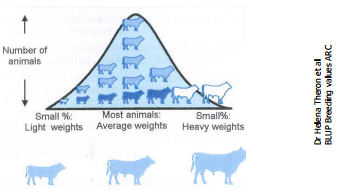“The whole subject of inheritance is wonderful”, wrote Charles Darwin in 1868. Darwin admitted, however, that the biology of his day provided no solution for what continued for many years to be called the “riddle of heredity”.
At the same time that Darwin was writing this work, a monk and biologist Gregor Mendel was doing experiments with peas and he was beginning to unravel the riddle of heredity. His work became known around 1900 and the concept of the gene was developed. Today we still use the gene terminology and the genome (where the genes of a species are situated on which chromosomes or on the specific loci) of a lot of species are fully understand and described.
Mendel worked on what we call today the single gene inheritance. In other words, where the gene is inherited in a predictable statistical ratio and the expression of the characteristic controlled by the gene can be easily recognized.
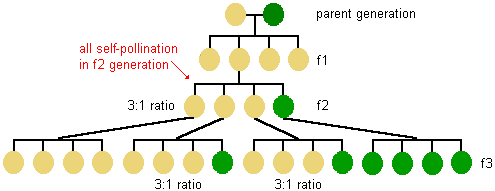
Definition:
Locus: Where a specific gene is situated on a chromatid of a chromosome.
Loci: Plural of Locus.
Genome: The genetic makeup of specie. That will give you the full picture where genes are situated on which chromosome and its location on the chromosome.
However, most of the genes responsible for production characteristics in farm animals are controlled by a lot of genes. The selection for such production traits is much more complicated. Scientists have developed many methods during the past years with which they can eliminate the concealing environmental aspects with complicated statistical calculations and are now able to come up with breeding values that can predict quite accurately how a breeding animal will breed. They also developed analytical skills with which they can determine the genetic profile of any individual animal. In the future it seems that this DNA profiles will be used to predict an animal’s breeding abilities.
Nature and Function of the Gene
 |
Knowledge of the gene and some of its functions is necessary to obtain a good foundation in the principles of animal breeding. The gene is the smallest biological unit of inheritance and is carried, as was mentioned already, on the chromosome. Hundreds and possibly thousands of genes are carried on each chromosome. The chemical composition of the gene has been studied indirectly by the chemical analysis of the chromosomes. It was found that chromosomes contain proteins and nucleic acids. Two kinds of important nucleic acids occur in cells, namely DNA and RNA. DNA (de-oxyribonucleic acid) is the primary genetic material and the gene is a segment of a DNA molecule. Electron microscope pictures show that the DNA molecule is longish and rather stiff, like a piece of cord. X-ray analysis shows that it is actually a double molecule or chain with one chain wrapped around the other in a helical structure. The two chains are connected at various points. |
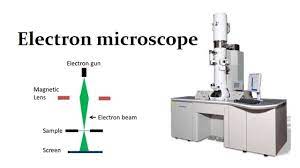
Our knowledge on the structure of the DNA molecule is mainly due to the work of two brilliant scientists, namely an American, Watson and an Englishman, Crick. While working at the University of Cambridge in 1953 they put forward a new idea for the structure of the DNA molecule. It is known as the Watson - Crick Model and up to now it is still the model that fit the facts most closely.
This model shows the DNA molecule as a double spiral consisting of smaller molecules held together in a special way. One can think of it as a twisted ladder in which the two uprights consist of alternating phosphate and sugar groups, held together by strong chemical bonds. The rungs, which hold the uprights together, are attached to the sugar groups. These rungs may consist of any pair of a wide range of different combinations of nitrogen bases, which is called purines and pyrimidines. Weak chemical forces, hydrogen bonds, between matching bases of the two chains hold the molecule together. In the figure the structure of DNA is presented according to the Watson - Crick Model.
If we imagine the strands of the spiral unwound and the whole structure flattened out, it would look somewhat like this.

Where A, T, G and C etc. are the nitrogen bases (purines and pyrimidines)
Figure - Representation of the double helix set upon a flat surface. The next figure illustrates the inheritance of a single gene responsible for the plumage colour of Andalusian fowls.
Crosses between black and white fowls produce only blue-grey offspring in the F1 generation. When the F1 offspring are mated with each other, the F2 generation they produce will have: 25% black, (which breed true); 50% blue-grey, (which breed like the F1 offspring), and 25% white (which breed true) coloured plumage.
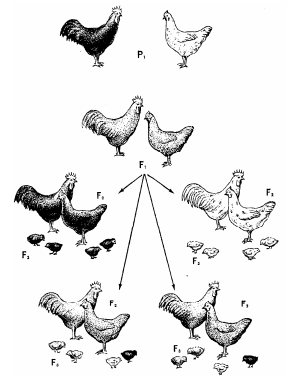
The Principals of Genetics
All living creatures consist of millions and millions of cells. Every cell has a cell nucleus. In this cell nucleus very small strings, known as chromosomes are found. On this small chromosome strings the genes are found. In body cells the chromosomes are found in pairs and therefore the genes are also found on both chromosomes.
Formation of Gametes
Click here to view a video that explains Formation of Gametes.
The ovum or gamete of the female animal has only one of the pair of chromosome that is found in a body cell. We said the cell is haploid (has only half the chromosomes and genes of a body cell). The body cell is diploid full set of chromosomes. The mature sperm (male gamete) cells of the male have also only half the chromosomes and genes of the male’s body cells. Therefore, the sperm cell is also haploid.
When the two gametes (sperm and ovum) combine during fertilization the result is a cell with a new combination of two sets of genes. Diploid and very unique in combination of its genes and is called the zygote.
The gamete is formed through a division called reduction division (Meiosis) because the chromosomes and genes are reduced to half (haploid) that of the body cells. When body cells divide we call it mitoses. After mitosis the resulting cells have the same amount (diploid) of genes than that of the dividing cell.
Mitosis
We are now coming back to the fertilized egg cell. The cell divisions, which affected the growth of an animal, are called mitosis. It is visible under a strong microscope, shown schematically in the figure.
The most important feature of mitosis is that the chromosome number remains constant throughout successive cell divisions.
The result is an exact distribution of chromosomes to the new cells as they are formed. The new sell, formed by the chromosomes, is the same as that of the cell from which it has been derived. The ability for a single cell to give rise to all the different kinds of specialized body cells can be explained by the mechanism of differentiation.
Mitosis, then, is the normal duplication of body cells to form new daughter cells with the same chromosome number as the mother cell.
Stage 1 - 6 of the mitoses division - division of body cells.
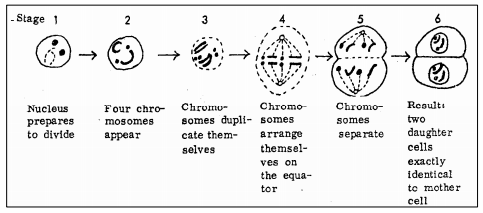
Meiosis
Click here to view a video that explains Meiosis.
Fertilization occurs when the sperm and the egg unite to form a new individual. For species to maintain a constant chromosome number, it is therefore necessary that each egg and each sperm should contain only half the chromosome number. The process of cell division that results in the formation of sex cells (gametes) and the halving of the chromosome number are known as meiosis.
During meiosis the members of each pair of chromosomes line up side-by-side and separate in such a way that each daughter cell has one member of each chromosome pair. Each gamete will therefore contain exactly a half of the normal chromosome number. With fertilization the normal chromosome number is restored. The process of meiosis is illustrated in the figure.
Stage 1 to 5: Meiosis forming of male and female gametes.
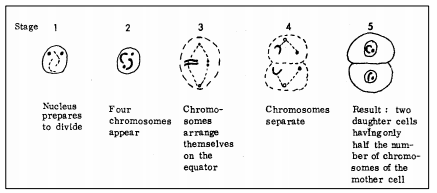
Body Cells
There are thousands of genes situated on the chromosomes in an individual’s cell nucleus. The composition of the genes in each individual is unique. That is because nature mixes the genes in the individual parents before a half from each parent is transferred to its offspring via the ovum in the female parent and the sperm cell of the male parent.
During the process of fertilization, the two sets of chromosomes of the mother and father are joined, and a new individual with his own unique gene composition is conceived. Note that each sperm / ovum produced by an animal does not carry exactly the same gene component, because a different chromosome combination is possible in both the sperm and the ovum. This contributes to the variation in genotypes produced. Since new gene combinations occur continuously, new variations are also produced continuously.
Qualitative Inheritance
Interpretations of Mendel’s single gene inheritance (The experiments were done with peas. Therefore, the male gametes are pollen and female gametes are egg cells)
Interpretation
Assume that for a given pair of alternative characters, F1 individuals have received an appropriate genetic element from each parent. That will be the contribution of each gamete. Let X be the element representing the character that is expressed in the F1, and x be the element that is the basis for the character that is not expressed in the F1. The F1 individuals may then be designated Xx. Suppose that the pollen and egg cells, produced by these individuals, contain only one of the elements, X or x, and that these two kinds of elements are represented equally among gametes.
Definition:
F1 - The first gross offspring of parents.
F2 - Offspring of the possible crosses between F1 individuals.
As a result of fertilization when the male gamete (pollen) joins the female gamete (egg cell) the resultant combinations may be predicted as shown below:

Summarizing, we expect to find F2 combinations of genetic elements in the proportion. 1 XX: 2 Xx: 1 xx
If in the F2 the relationship of element X to x is as it was in the F1, Xx individuals can be expected to express the characteristic expressed in F1 individuals. This means that in the F2 one expects XX and Xx individuals to show the same characteristic and xx individuals to show the alternative. F2 individuals are then expected to occur in a proportion of three (1XX + 2Xx) to one (1xx) and that is what Mendel found in his experiments.
Terminology
The following basic concepts are important:
A unit of heredity, for example the element that controls the stem length in peas, is called a gene.
The members of a pair of such units, like L and l controlling the long - short-stemmed alternative, are called alleles.
One (or very few) pair of genes with a large effect controls the Mendel inheritance of traits. We called these traits or characteristics qualitative or single gene traits. They have a characteristic, easily recognizable, that can be identified as either a dominant or a recessive characteristic, or each gene expresses a part of the characteristic’s expression.
Dominance is where a gene’s influence will show (it does not matter if one or both of the dominant genes are present) its will to be expressed in its offspring. Recessive genes can be obscured by the presence of the dominant gene.
The Gene Theory of Heredity
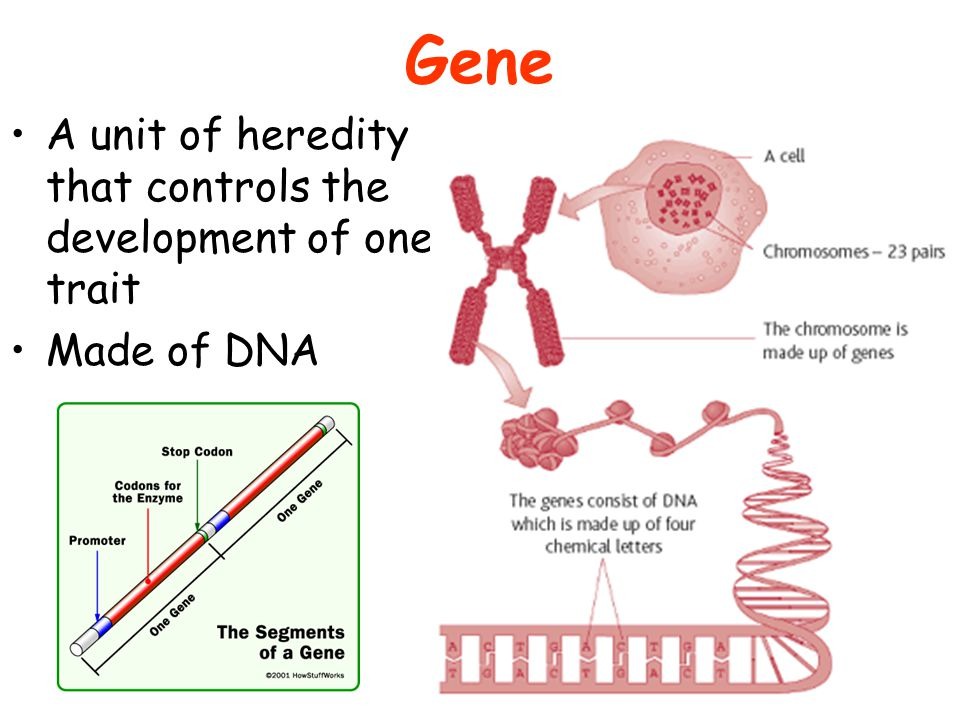
Single gene heredity was the first clear experiments in the early years of the development of the theory of inheritance. That was because the environment does not have an effect on this kind of inheritance. Morgan, a well-known investigator of Mendel's theories, and his team put the facts together into a theory. This is known as the gene theory of heredity and can be summarized as follow:
- Hereditary traits are determined by tiny particles called genes.
- These particles are transmitted from one generation to the next during the process of reproduction.
- The genes are strung in single files along the length of nuclear structures called chromosomes.
- Each gene has a definite position, or locus, on the chromosome in which it resides.
- The gene, at a given locus on a chromosome, may take one of several different (allelic) forms.
- Each gamete has a complete set of genes carried in a single set of chromosomes (monoploid / haploid).
- When two gametes unite, the resulting zygote receives two complete sets of chromosomes carrying two complete sets of genes (diploid).
- When the zygote develops into an organism, each cell receives two complete sets of chromosomes carrying two complete sets of genes.
- The interaction of the two sets of genes contained in each cell determines the characters which show in the organism.
- When this new organism produces gametes, reduction division (meiosis) causes the paired chromosomes to separate, so that only one member of each pair goes to any one gamete.
- This separation of chromosomes provides the mechanism by which allelic genes are separated from one another.
- Since each gene retains its own identity at all times, allelic genes separate in pure form.
- Chance determines how gametes unite to produce the next generation. Therefore, it is chance that determines the recombination of the segregated genes.
- The recombination of genes by chance results in various ratios (Mendel), such as the 3: 1 ratio
- The gene theory explains the way in which genes are carried over from one generation to the next; that is the mechanism of this process. What the gene really is that its bio-chemical composition and bio-chemical action first became clear by virtue of research done after 1950 and with which people are still busy.
Click here to view a video that explains Chromosomal Inheritance
Example:
P = Gene for cattle without horns.
p = Gene for horns
P is dominant over p.
Definition:
Monozygotic - Both the gametes have the same genes.
Heterozygote - Half of the gametes have the dominant gene while the other half has the recessive gene.
Quantitative Inheritance
Quantitative inheritance is very common in nature; it is common among plants and animals. Most production traits of farm animals such as growth rate, milk production, and hair and wool production is inherited in this way. Many genes control quantitative traits, each with a small effect, while the environment plays a more important role in the expression of the trait. To fully understand what is meant by certain expressions let us explain a few terms.
Genotype
The genotype of a cow, ram or chicken can be described as that specific individual’s genetic makeup, in other words, the unique genetic composition of that particular individual. No two individuals, except for clones and identical twins, have the same genotype. At present the genotype cannot be identified because it is inside the very small cell nucleus. Part of its expression in the individual is also obscured by the environmental influence on the development of the individual.
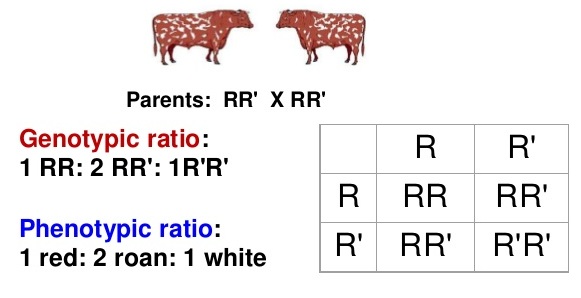
The Phenotype
The phenotype, on the other hand, is how the individual expresses itself. In other words, how the individual will look like or what it’s mass, colour or built will be. The phenotype is a measurable expression of all environmental and genetic contributions put together in the individual, plus the interaction that the environment changes has on the gene combination of the genotype.
In short:
Phenotype = Genotype + Environment + Interaction of the environment and the genotype.
The Meaning of Quantitative Inheritance for the Farmer

The phenotype (P) of an animal refers to the measurement of the animal, e.g. weaning weight (or any other performance record). The genotype (G) is the total genetic composition of the animal for a specific trait and the environment (E) refers to all environmental effects that have an influence on the measurement.
Because most of the production traits inherit in a quantitative way, it is very important that the breeder of farm animals has a basic understanding of how quantitative traits can be selected.
Heritability
Heritability is an indication of the number of genes, that determine a certain production trait, is transferred to the progeny. In genetics the term positive genes is used for the genes that supports and contributes to the development of the trait while the term neutral genes is used for the genes that does not support or contribute.
Example:
Body size of sheep or cattle:

A small sheep and a large sheep will have the same number of genes that are responsible for the size of the sheep. If the two sheep are kept in exactly the same environment, the large sheep will have more positive genes for body size and the small sheep more neutral genes.

The environment also plays a very important role and may be responsible for 70% of the size of the sheep and the genes only for 30%. Then we say the heritability of body size is 30%. That means that 30% of the body size was inherited form the parent’s genes. One important aspect to remember is that although the heritability of a trait is 30%, it means that 30% of the factors determining the body size were inherited from the parents. Each parent contributes only a half of the genes responsible for body size.
If both parents contribute, say 10 positive genes for body size, the body size of the offspring will be bigger than when one parent contributes 5 positive genes and the other parent 10 positive genes, and the environment is kept the same.
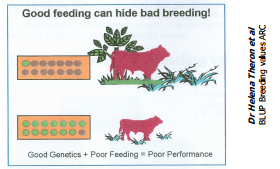
If an animal with a high genetic potential is not fed, it will be impossible for him to reach his genetic potential. A genetically inferior animal, on the other hand, which is well fed, will perform much better than his genetic potential. IN THE SAME ENVIRONMENT, however, the animal with the superior genetics will perform better. Genetic improvement is permanent and is transmitted to the progeny, which is not the case with environmentally induced good performance.
How Does A Farmer Use Quantitative Inheritance To Improve His Flock?
Repeatability. As seen in qualitative traits, some bulls will breed purely for certain characteristics. In other words, he is homozygous for that particular aspect. He will repeatedly transfer a trait to his progeny.
However, in quantitative traits, such as body size and milk production, that will not be so clear-cut.
After careful selection and by means of line and inbreeding for a specific trait, the “positive” genes that enhance that trait, will accumulate in the progeny. We will say the progeny become more Homozygotic for a particular production trait. That animal will transfer his super gene combination to his entire offspring. We call that the animal’s high repeatability for a specific trait.
Selection of Animals To Improve Performance
The Normal Curve
The so-called normal curve and selection: The normal curve is a graph that gives the variation for a certain trait among farm animals. Let us use fleece mass of merino sheep to explain.
In a flock of merino sheep there will be sheep that produces only one kilogram of wool per year and there will be sheep that produces 6 kg of wool per year. Then there will be a lot of sheep producing wool between 1 and 6 kg wool per year. The variation of wool production will therefore be between 1 and 6 kg of wool per year.
If you plot all the sheep’s production on a graph, then you will find that most of the sheep will produce round about 3.5 kg (the average wool production of the flock) of wool per year. The curve will look like a clock and is called the normal curve.
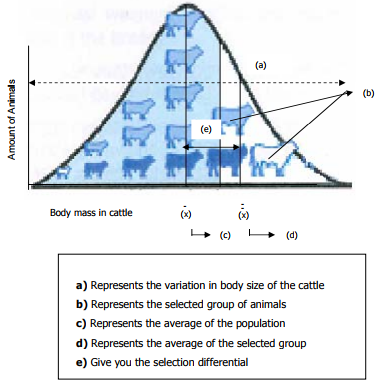
You can use this curve to select the animals that are superior, and you can work out the selection differential. That is the amount (difference) the average of the wool production or body mass will be higher in the selected group, than the average production of the sheep or cattle in the unselected population. Another example: Body size in cattle.
Cattle example:
The Importance Of A Good Reproduction Rate In Farm Animals
To improve your flock, it is important to cull a few female and male animals every year. The average reproductive lifetime of female animals is between five and seven years. If keeping in mind that an animal rarely reproduces in its first year, you will replace breeding stock at a rate of about 20% per year.
You will see that he needs nearly a 100% lambing percentage to achieve his goal. The most important aspect to remember where single and twin offspring are concerned is that it is better to rather concentrate on the improvement of the male animals than to give too much attention to female animals.
You can select very strict and will still be able to improve your stock. A ram or bull, if they are correctly selected and tested before you use them intensively; will contribute much more to the improvement of the flock. If you use 1 ram to mate with 30 ewes, half of his gene- influence will be contributed to the offspring (lambs) of all 30 ewes. Now you can see now how important it is to ensure that your breeding animals are fertile and that the male animals are superior for the traits you want to improve.


